Do you know what Shakshuka is?
Shakshuka is a dish made by cracking eggs into a tomato-based sauce and simmering them.
Originating in Tunisia, this dish has now spread throughout North Africa, including Libya and Egypt, where it is widely enjoyed.
This time, we'll introduce a stew beloved in North America!
Please watch until the very end!
Additionally, TasteTune introduces cuisines from around the world and streams music that expresses those dishes♪
Available on YouTube, Spotify, and other platforms, so enjoy it along with this article!
What is Shakshuka?
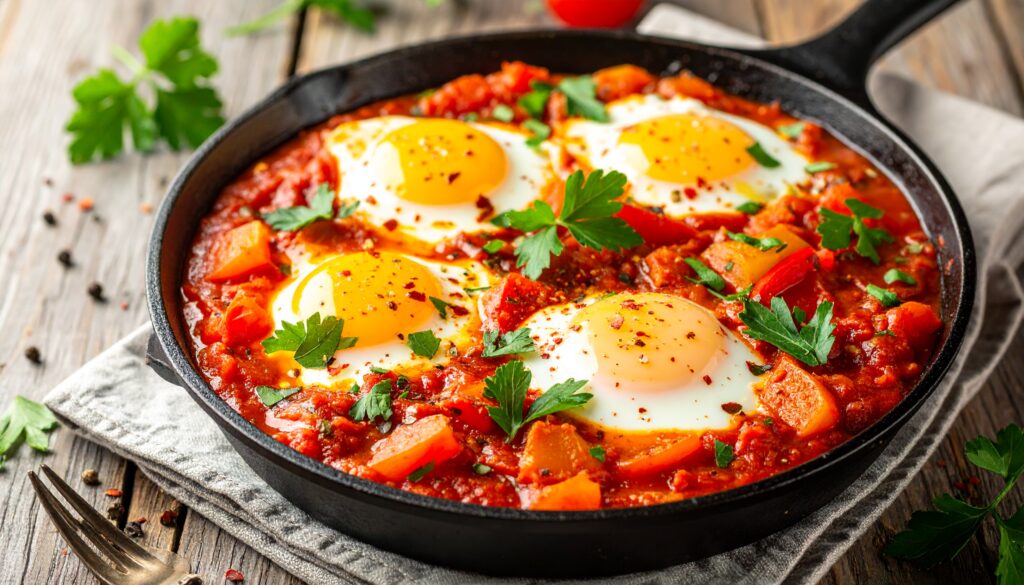
Shakshuka is a dish made by cracking eggs into a tomato-based sauce and simmering them.
It is often cooked on a griddle or in a deep frying pan and served directly from the pan.
This dish originated in Tunisia but is now enjoyed throughout much of North Africa.
The base is the acidity and sweetness of tomatoes, and adding spices creates a fragrant, slightly spicy flavor.
It is also commonly eaten mixed with soft-boiled eggs, allowing you to enjoy its rich and mellow flavor.
Additionally, dipping bread in sauce is a standard way to eat it.
In Libya as a home-cooked meal, in Egypt as breakfast or a light snack.
From there, it spread to the Middle East (Israel, Lebanon, etc.), and is now a popular cuisine along the Mediterranean coast and in Europe and America.
TasteTune – Shakshuka
Hey everyone, have you heard Tastetune's song “Shakshuka”?
This music was inspired by shakshuka, expressing the aroma of tomatoes simmering and poached eggs under the morning sun through sound.
The oud, darbuka, and riq instruments transport listeners to bustling markets and heartwarming dining tables.
Please give it a listen!
Below, we introduce the thoughts, expressions, and creative approaches embodied in this musical work.
The Fragrance of Sound Coloring the Middle Eastern Morning: The Selection of Tones
This piece begins with warm, exotic sounds reminiscent of the landscapes of the Middle East and North Africa, where shakshuka originated.
The deep, rich resonance of the oud evokes the depth of flavor in slow-simmered tomatoes and the long history passed down through generations of cooking.
The rhythmic sounds of the darbuka and ric (a small tambourine-like instrument) fill the air with the vibrant energy and aroma of spices, as if you were walking through a morning market.
These tones are a composition designed to let you savor Shakshuka's warmth, richness, and the allure of its slightly stimulating spices through your ears.
Painting the Culmination of Flavor with Sound: The Composition of Music
Midway through the piece, the sound swells and_ layers richly, much like the moment when eggs in shakshuka melt and_ blend into the sauce.
The gentle melody gradually grows more vibrant, as the instruments unite to depict “a happy moment at the dinner table.”
This swelling moment envelops the heart like a scene from a movie, evoking within the listener a sense of “the warmth of morning” and_ “the breath of life.”
It is not merely music, but the very moment when emotions evoked through the meal are expressed in sound.
Warm, rich, and spicy aftertaste: The overall picture of the piece
What comes through in this entire work is warmth, richness, and spice.
It's like the smiles of people gathered around freshly baked bread and shakshuka in a small café bathed in morning light.
The melody flows gently, gradually growing more passionate, and finally closes softly and calmly.
It's music that warms your heart, like the happy afterglow that lingers after finishing a meal.
The World of Shakshuka Experienced Through Sound
This piece of music is not just background music.
It is an artistic creation designed to let you experience through sound the “deep, warm flavor” of shakshuka, the “vibrant culture” of the Middle East, and the “happy moments of the morning.”
Close your eyes, and you'll feel the scent of spices and the warmth of sunlight, bringing a smile to your heart—here lies such a journey of sound.
Please savor the world of sounds in “Shakshuka” to your heart's content and feel the warmth of a foreign morning.
The History of Shakshuka

The name “Shakshuka” originates from a Maghrebi Arabic word meaning “a mixture or blend.”
The Shakshuka we know today—eggs simmered in tomato sauce—first appeared in the 16th century.
Vegetables native to the Americas, such as tomatoes and chili peppers, took shape as they spread to North Africa via Europe and other regions.
It is also said that the form of vegetable-based stews was influenced by the Ottoman Empire.
One theory suggests that Shakshuka originally existed as an egg-free stew, with eggs being added later.
By the mid-20th century, it had become widely known throughout the region thanks to Jewish immigrants from North Africa.
Fun Facts and Interesting Stories About Shakshuka
Origin Controversy
The prevailing theory is that Shakshuka originated in Tunisia.
However, similar dishes also exist in Libya and Algeria.
It has also become so established in Israel that it is considered a national dish.
Shakshuka, beloved in so many countries, is generally considered to have originated in Tunisia.
However, the actual place of origin remains unclear, and the debate continues to this day.
Just like Turkey's Menemen
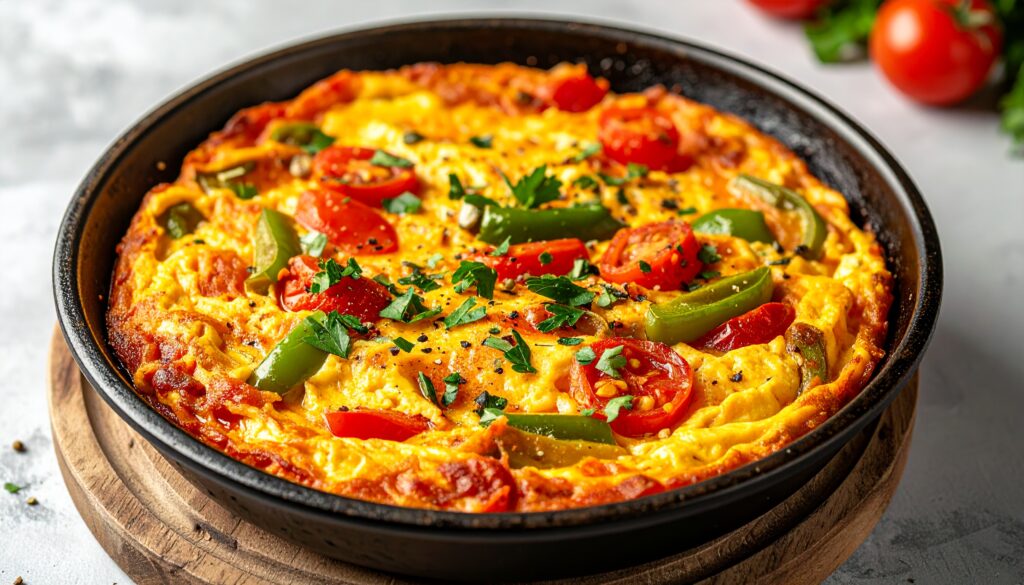
Turkey's “Menemen” is also a stew of eggs and tomatoes, similar to Shakshuka.
It is thought that similar dishes emerged due to the influence of the Ottoman Empire.
However, there are differences in how the eggs are cooked.
Menemen is typically made by mixing the eggs thoroughly before frying.
Breakfast or dinner?
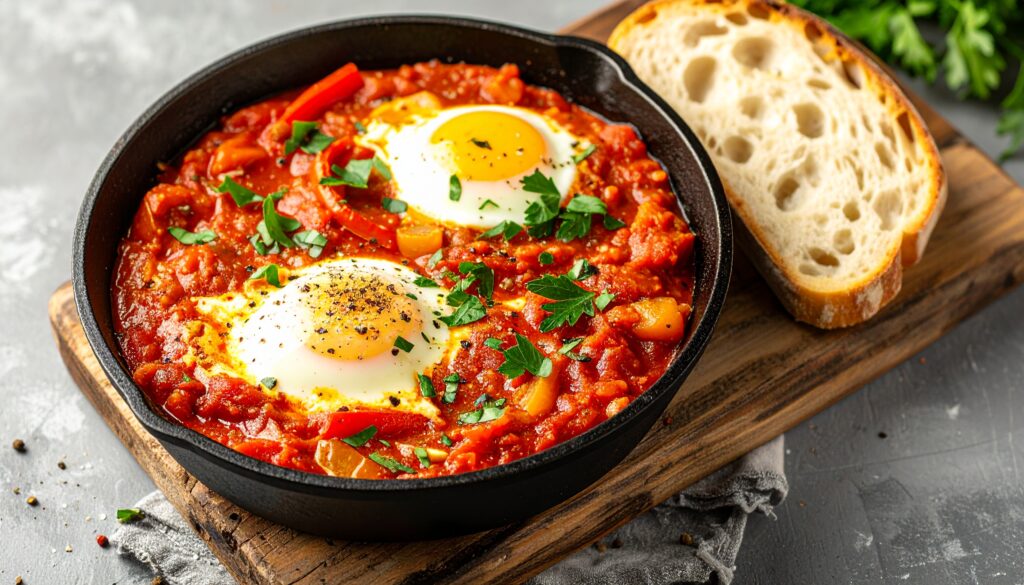
In Israel, Shakshuka is often eaten for breakfast.
Because it's perfect for breakfast when eaten with bread.
However, in Egypt and Tunisia, it is also served for dinner.
It is also enjoyed as a light lunch in Libya.
Shakshuka is eaten across such a wide region that the timing of when it's eaten varies widely by country and region.
A wide variety of ingredients
The basic ingredients for Shakshuka are tomatoes, bell peppers, and eggs.
However, there are many variations depending on the region and household.
Adding cheese or chickpeas can increase the volume.
Adding lamb or sausage can make it closer to a meat dish.
Adding chili peppers or harissa will make it spicy.
Shakshuka is a versatile dish that, while simple, can take on many different forms depending on the ingredients used.
Also popular as diet food
Shakshuka is a dish centered around vegetables and eggs.
Therefore, by limiting the oil, you can enjoy it as a very low-calorie and healthy meal.
In particular, tomatoes and eggs, which are used as a base, provide lycopene and protein.
In recent years, it has gained attention as a healthy dish, appearing in diet books and health websites.
It is a wonderful dish that is both a traditional cuisine and a modern health food.
How to Make Shakshuka (Serves 4)
Recommended Tools
- Fiberline Skillet 22cm:Deep enough for simmering and cracking eggs into
- Alternatively, a deep cast iron or iron skillet with a lid may be used.
(※For cooking, a deep frying pan that prevents sauce spills and has a lid is convenient.)
Ingredients
- Olive oil … 2 to 3 tablespoons
- Onion … 1 (finely chopped or thinly sliced)
- Bell pepper or red bell pepper … 1 (thinly sliced)
- Garlic … 2–3 cloves (minced)
- Tomatoes (canned diced or ripe tomatoes) … 400–500g
- Tomato paste … 1 tablespoon (if available)
- Cumin powder ... 1 teaspoon
- Paprika powder (smoked is also acceptable) … 1 teaspoon
- Salt ... appropriate amount
- Black pepper ... appropriate amount
- Chili flakes or red pepper flakes … a pinch (to taste)
- Eggs … 4 to 6
- Parsley, cilantro, and other herbs … to taste (for garnish)
How to make them
- Chop vegetables
Finely chop the onion, julienne the bell pepper, and mince the garlic.
Dice the tomatoes, or if using canned tomatoes, lightly crush them. - Stir-fry
Add 2 to 3 tablespoons of olive oil to a frying pan and heat over medium heat.
Add the onion and sauté until softened. - Add vegetables
Add the bell peppers and continue stir-frying. Then add the garlic and stir-fry until fragrant. - Make tomato sauce
Add the tomatoes and tomato paste.
Add cumin powder, paprika powder, salt, black pepper, and chili flakes, then simmer over low to medium heat. - Drop_ the egg
Once the sauce has reduced to some extent, make wells in it using the back of a spoon.
Gently crack the egg into it.
Cover and simmer over low heat for 5 to 8 minutes, until the egg whites are set and the yolks reach your desired consistency. - Cook the eggs
Reduce the heat, cover, and simmer.
Heat until the egg whites are set and the yolks reach your desired firmness (approximately 5 to 8 minutes).
It is common to cook the yolk slightly runny according to preference. - Finishing
Turn off the heat and sprinkle with finely chopped herbs (such as parsley or cilantro).
Drizzle a little olive oil over it if desired.
Serve with warm bread (pita, baguette, chapati, etc.).
Arrangements & Tips
- Adjust the doneness of the eggs to your liking. The yolk can be anywhere from soft-boiled to hard-boiled.
- Be careful not to let the sauce burn, as it can easily scorch if simmered too long.
- Adjust spiciness by adding chili peppers or harissa.
- Adding cheese (such as feta), spinach, chickpeas, etc., will add variety to the texture and flavor.
- You can also prepare the sauce the day before and finish it by adding eggs the next day.
Summary
How did you like it?
This time, we introduced Shakshuka, a dish beloved throughout North Africa!
The harmonious blend of sauce and bread will captivate anyone who tastes it.
I believe the reason it's widely accepted is because it can be customized to one's taste and offers many healthy eating options.
And as I wrote this article, I realized that many countries and regions enjoy this dish.
At first, I thought it was Tunisia, Libya, Egypt, and their surrounding areas.
However, as mentioned in the article, it has become popular not only in Africa but also in regions like the Middle East and_ Asia.
There were plenty of appealing aspects, like the convenience of ingredients and preparation methods, plus the wide range of possible variations!
It is said to be served at Middle Eastern and Mediterranean restaurants in Japan.
Here, I think you can enjoy flavors close to the authentic taste.
And this time, we're also introducing how to make it.
The fact that it's relatively easy to make is truly appealing, isn't it!
Why not try incorporating it into your daily life?
Thank you for watching until the very end!
I'd be delighted if this article sparks your interest in this dish.
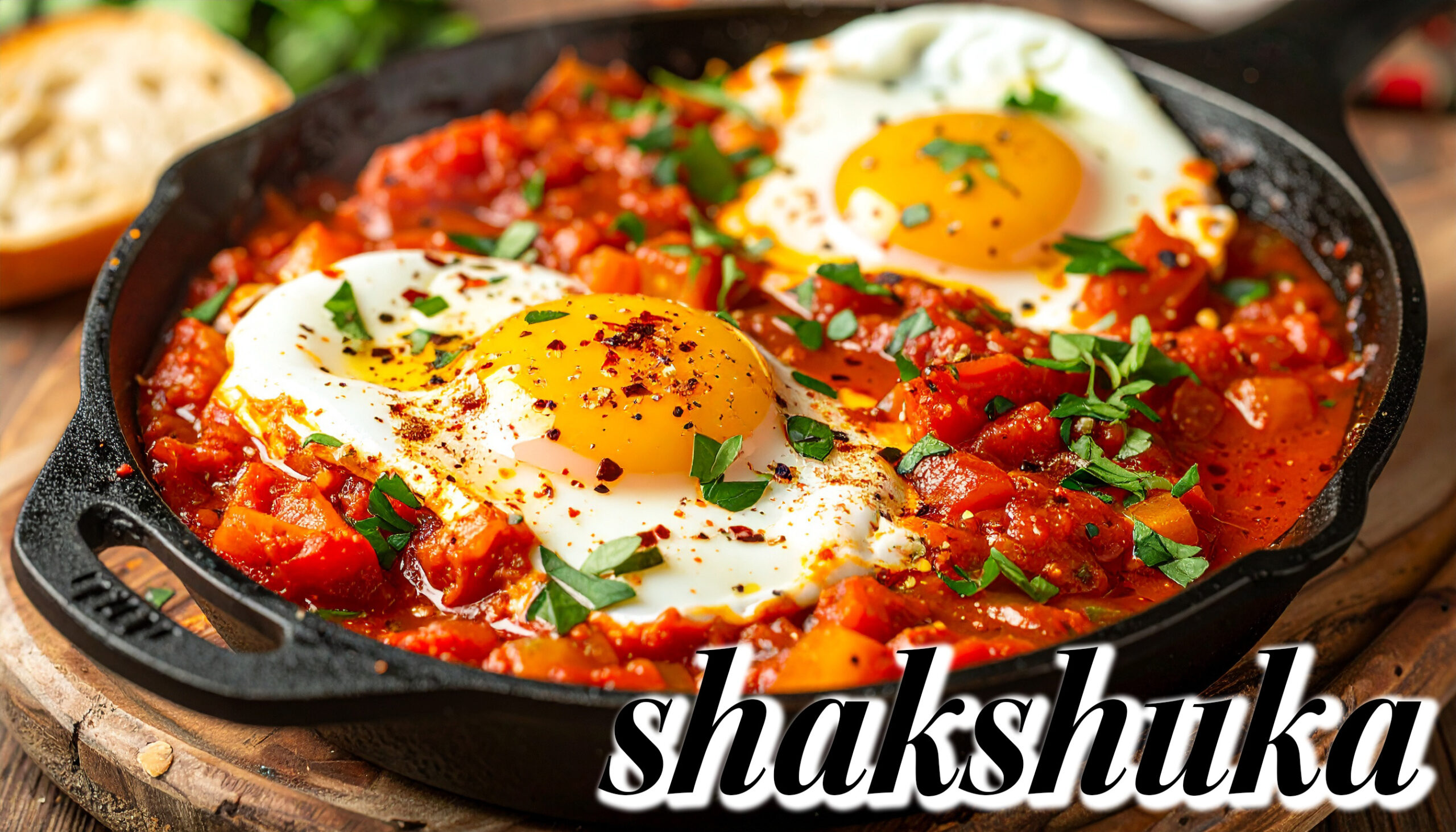


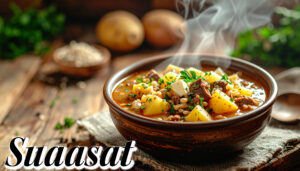
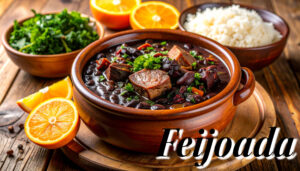

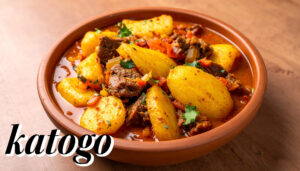


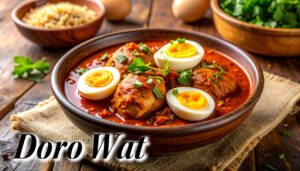
Comments